A Look at Every Company That Pepsi Owns
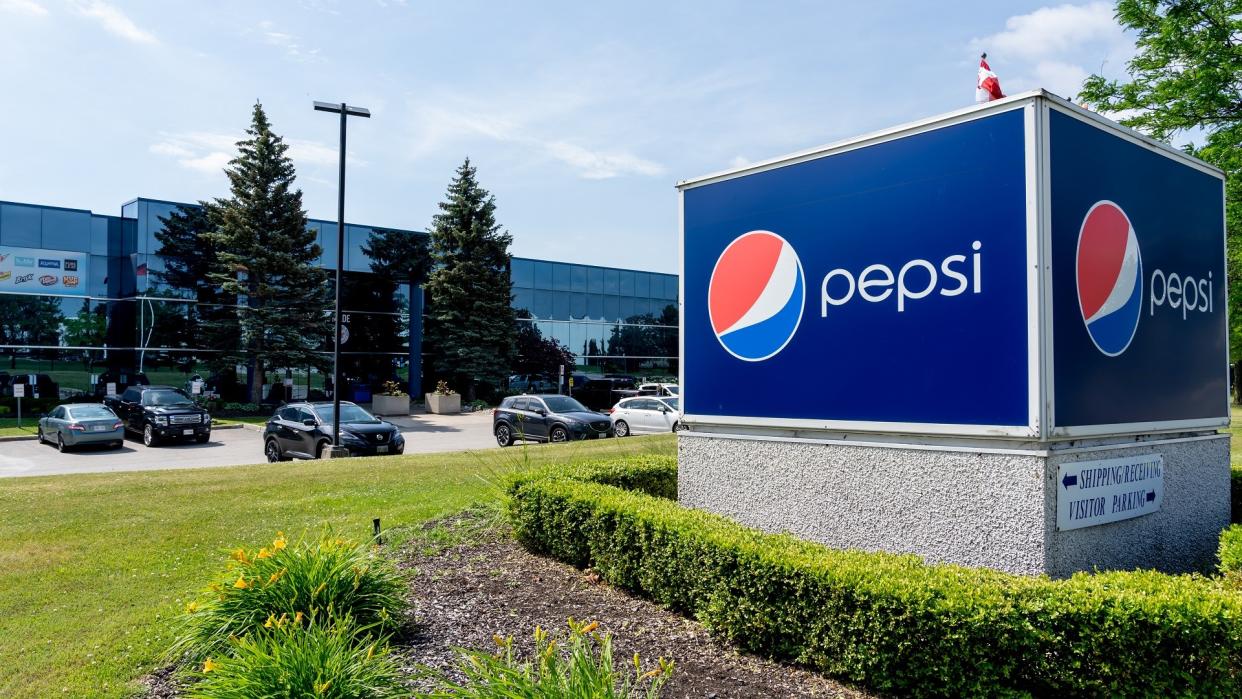
Food and beverage giant PepsiCo has been one of the world’s largest companies for decades. Second this year globally to only Nestle, PepsiCo is the largest food and beverage company in North America. PepsiCo, the larger conglomerate that is a result of decades of mergers, actually began as Pepsi-Cola in the 1890s and was founded by a pharmacist in North Carolina.
See: Inside the Cola Wars: The History of Coca-Cola and Pepsi’s Rivalry
Find: Mountain Dew, Corn Flakes and 9 Other Beloved Brands With a Twisted History
In the 1930s, it eventually expanded with Diet Pepsi and the purchase of Mountain Dew in the 1960s. Perhaps the largest acquisition that set the tone for the company to become a behemoth in the 21t century was the merger with Frito-Lay in 1965, when the company was founded as PepsiCo Inc, and the brand continued as we know it today.
From there, the company acquired beloved everyday brands like Quaker Oats, Gatorade, Fritos, Lay’s potato chips, Cheetos, Ruffles, Rold Gold pretzels and more, turning the humble late 19th century food company into an international billion dollar business.
Related: A Look at Every Company That Coca-Cola Owns
Since its acquisition of Frito-Lay brands, PepsiCo has experienced tremendous growth, and has turned into one of the 66 “Dividend Aristocrats.” These are a select group of S&p 500 stocks that have provided at least 25 years or more of rising dividend payments each year to their shareholders.
Economy Explained: Dividends: What Are They & Why Are They Important to Your Investment Strategy?
The company has recently been in the headlines with news of its sale of juice company Tropicana. Changing diets and perceptions on sugar and fruit juice combined with lagging juice sales led Pepsi to scrap the household orange juice name, CNN reports. In the deal announced on Tuesday, PepsiCo’s juice business will be sold for roughly $3.3 billion to PAI Partners, with Pepsi retaining a 39% stake in the newly formed business.
Pepsi has instead chosen to focus on its zero calorie sports and energy drinks, along with its other healthier beverage options. Here is a look at PepsiCo’s new portfolio, and all the food and beverage brands it holds in its massive portfolio.
Last updated: August 5, 2021
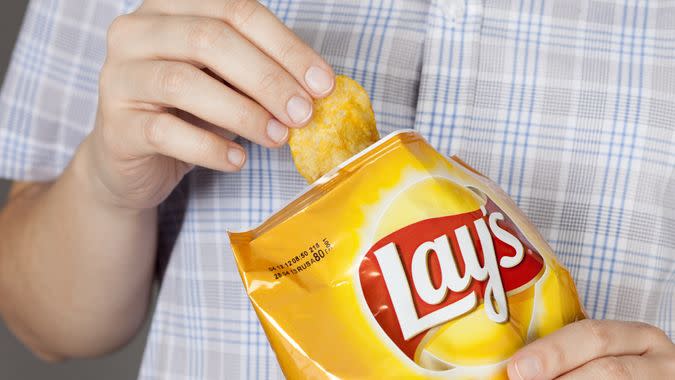
Lay’s
The Lay’s brand is one of the most recognizable throughout the world, and PepsiCo’s second most valuable brand behind only Pepsi itself. In 2017, Lay’s generated almost 2 billion in annual sales, with a market share of almost 30 percent of the entire potato chip market. Lay’s was created in 1932 by Herman Lay. He initially sold chips out of the trunk of his car and grew enough to merge with Fritos in the early '60s to become Frito-Lay, before being acquired by PepsiCo in 1965.
Discover: How To Start a Vending Machine Business in 8 Steps
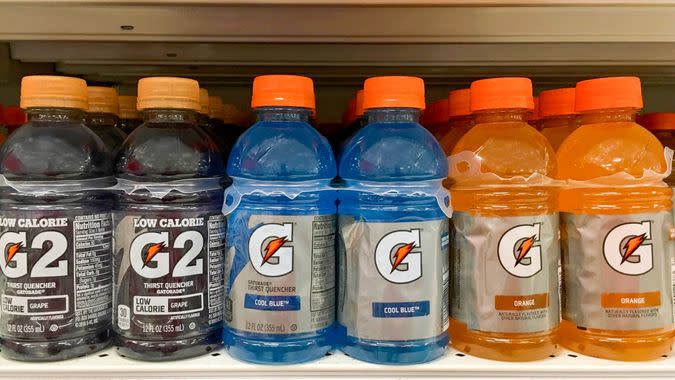
Gatorade
Gatorade was famously invented by a team of scientists at the University of Florida for its Florida Gators athletes. The drink came front and center when the UF football team won the Orange Bowl two years later, Gatorade in hand. Gatorade has a 72% market share in sports drinks in the United States and is the only beverage athletes can drink courtside at NBA games besides water. The company was eventually bought by Quaker Oats in 1983.
Read More: Football Players From These Colleges Make the Most Total NFL Money
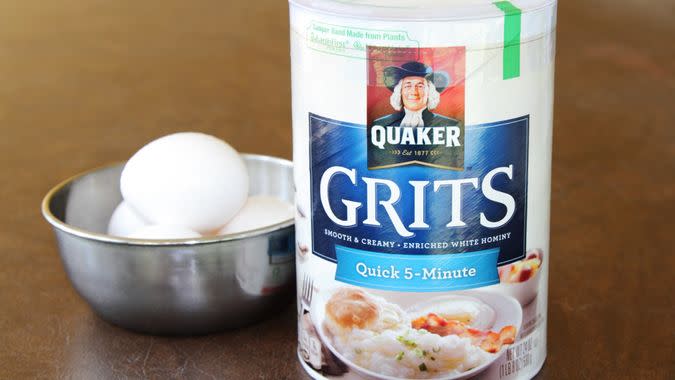
Quaker Oats
Quaker Oats is a unique brand for Pepsi, as it is the only food brand the company has in its portfolios that is not a form of chip. Quaker Oats was formed in 1992 from the merger of four oat mills and purchased by PepsiCo for $13.4 billion in 2001. Although originally purchased to gain control of Gatorade, Quaker’s health-conscious image has paid off. As Western diets trend more towards healthier alternatives, the health-conscious oat producer balances the company’s Frito-Lay division.
Learn: 26 Ways to Eat Healthy Without Breaking the Bank
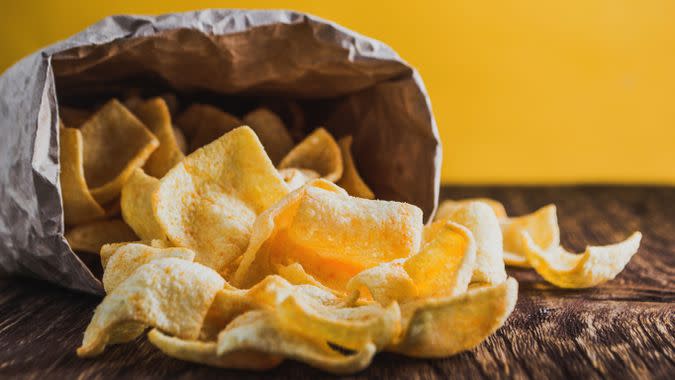
Fritos
The deep-fried corn chip was created in 1932 by Charles Elmer Doolin, but the recipe was not entirely his own. Doolin found a vendor selling fried corn chips in San Antonio and asked them for the recipe. He then took it to his own kitchen and tweaked the recipe with his mother, and thus the Frito corn chip was born.
Get Creative: 11 Delicious Recipes You Can Make on the Cheap With Your Pantry Staples
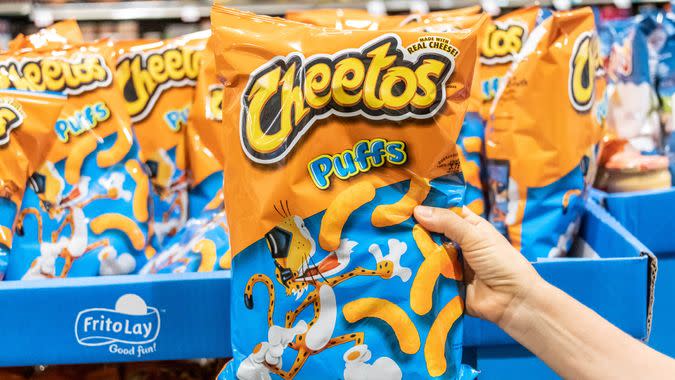
Cheetos
Created by the same person that invented Fritos, Cheetos came to be in 1948. Charles Elmer Doolin did not have the means to nationally produce Cheetos, so he partnered with Lay’s. It was the success of Cheetos in the following years that led to the merger between the Frito and Lay corporations to become the modern conglomerate Frito-Lay.
Related: T-Mobile and Sprint — and 5 Other Surprising Company Mergers During COVID-19
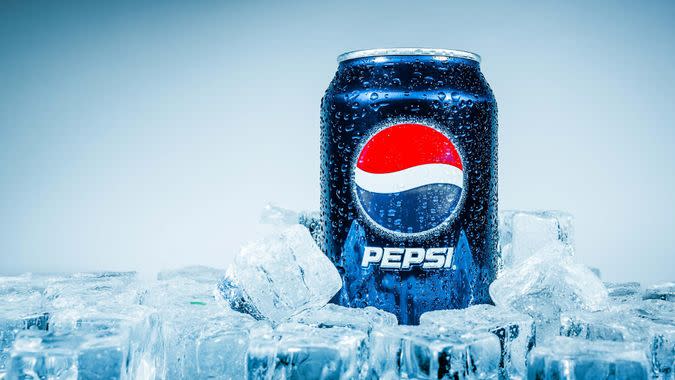
Pepsi
The company's namesake, Pepsi-Cola was actually first sold as “Brad’s Soda” as far back as 1893. The soda was created by Caleb Bradham in North Carolina, and in 1898, he renamed his soda Pepsi-Cola, coming from the digestive enzyme pepsin and the kola nut which was used in the original recipe. Pepsi is PepsiCo's most valuable brand and is sold in over 200 countries with more than 20 billion dollars in revenue per year -- but still comes in third after Coca-Cola and Diet Coke.
More: Coke Joins Other Consumer Brands in Raising Prices to Offset Higher Costs
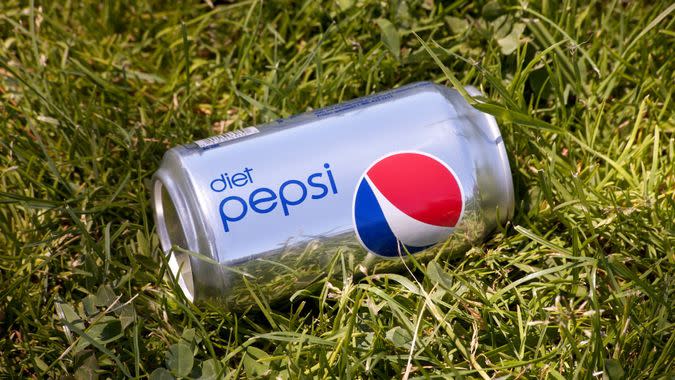
Diet Pepsi
Diet Pepsi was actually the first diet cola drink distributed nationally in the United States, released in 1964. Although its rival Diet Coke is also well-known, Diet Coke did not get released until 18 years later in 1982, making Diet Pepsi the original. Diet Pepsi has enjoyed massive success and has the seventh-highest soda market share in the United States.
Find Out: 10 Coca-Cola Products You Can’t Buy Anymore
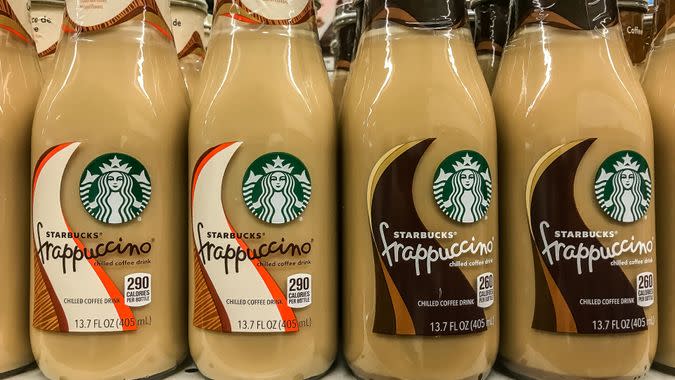
Starbucks Ready To Drink
Ever seen a chilled Starbucks drink at your local gas station? That’s Pepsi’s doing. The two drink behemoths decided to partner up in 1994 to distribute ready-to-drink beverages in North America and then internationally in 2007. Although the business got off to a slow start, by 2012, Starbucks RTD beverages were bringing in more than a billion dollars per year in sales.
Imagine: How Much Would You Have Today If You Invested Your Coffee Money in Starbucks IPO?
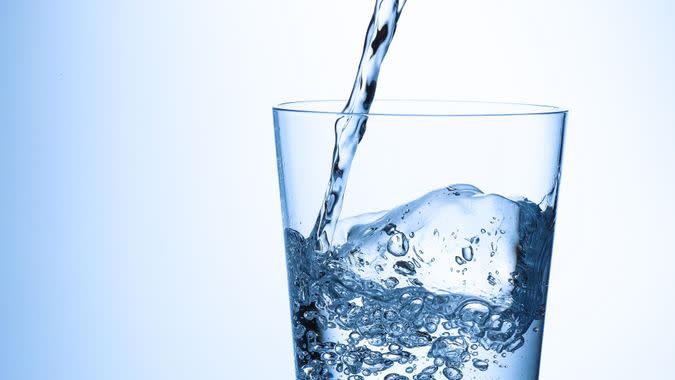
Aquafina
Aquafina was developed in-house by PepsiCo, and was released in 1994 to compete in the bottled water industry. Aquafina water is actually municipal tap water that is filtered using reverse osmosis, UV lights and ozone. It's also one of the largest bottled water companies, behind only Dasani and private-label brands.
Know: 6 Alarming Facts About America’s Water Industry
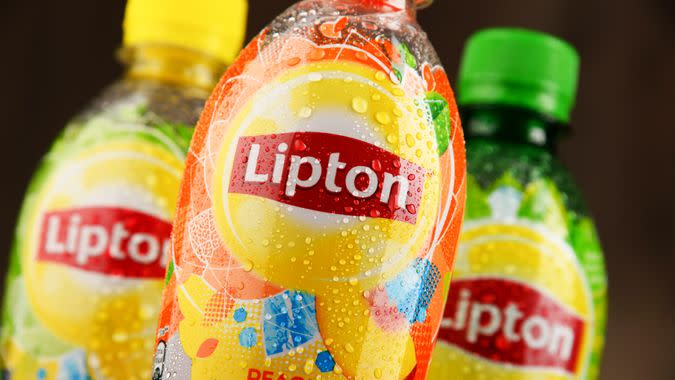
Lipton
Although PepsiCo does not own Lipton outright, the company distributes and sells Lipton’s ready-to-drink beverages in a partnership with Unilever -- similar to their deal with Starbucks. The agreement began in 1991, and by 2011, the Lipton drinks had annual sales of over 2 billion dollars and are currently sold in over 100 markets throughout the world.
Read: Earnings Statements Find Big Corporations Including Coca-Cola Worrying About Inflation Into 2022
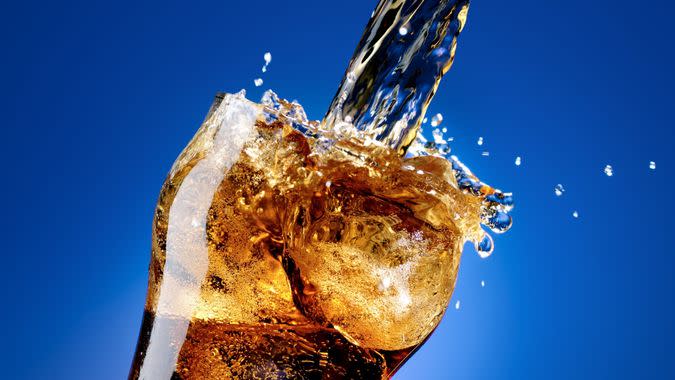
Brisk
Brisk is another Pepsi-Unilever partnership, where Pepsi does the distributing but does not own the brand outright. The brand reached over a billion dollars in sales in 2012, after increasing the can size and dropping the price to 99 cents to compete with Arizona and target a younger audience.
The U.S. tea market has quadrupled in 25 years, and this marks PepsiCo’s second billion-dollar tea brand on its roster.
Investing: 7 Best Dividend Trackers of 2021
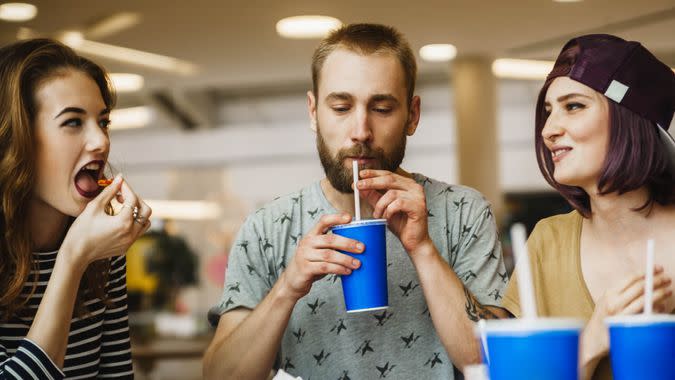
Pepsi Max (now Pepsi Zero Sugar)
The supposed male-targeted answer to Diet Pepsi, Pepsi Max was a diet soda “for men.” Thinking that most diet soda drinkers are female, Pepsi Max is a zero-calorie diet drink marketed directly towards male audiences. It was released in 1994 in the UK and Italy and quickly spread thereafter.
Compare: How Much These High-Profile Female Athletes Make Compared To Male Counterparts
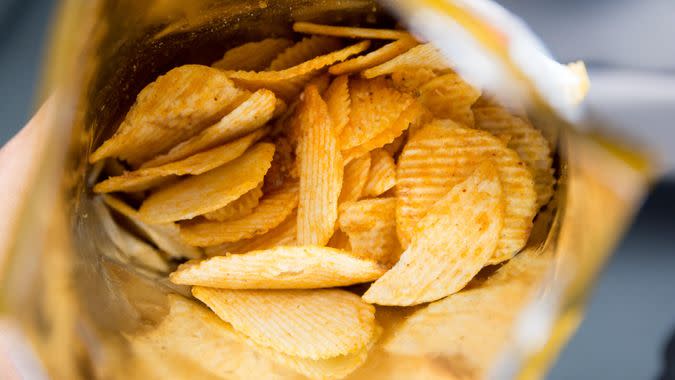
Ruffles
The potato chip with the ruffles has been around since 1958. The chip ridges help to keep the structure of the chip in the bag and break less. This also helps it to carry more dip and adds to its crunch. The brand generated around $2.5 billion dollars in sales the last time PepsiCo released individual sales data for brands in 2011.
Get Dipping: Indulge Your Snack Fix With Some Cajun Cheesy Chicken Dip
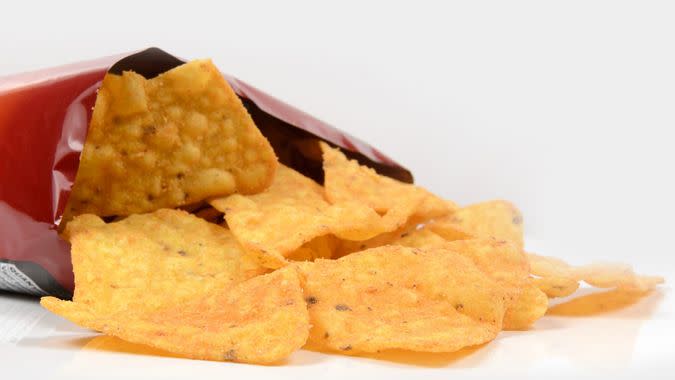
Doritos
Doritos are PepsiCo's second most valuable chip brand behind Lay’s. Doritos were invented at Disneyland in California in the early '60s. In 1964, an executive at Frito-Lay realized how popular the chip was at Disneyland, and decided to make a deal. For the first time, Doritos were taken out of Disneyland and, in the early '90s, broke a billion dollars in sales.
Budgeting: Disney Galactic Starcruiser Absurd Cost — Do This, Not That, to Save Thousands
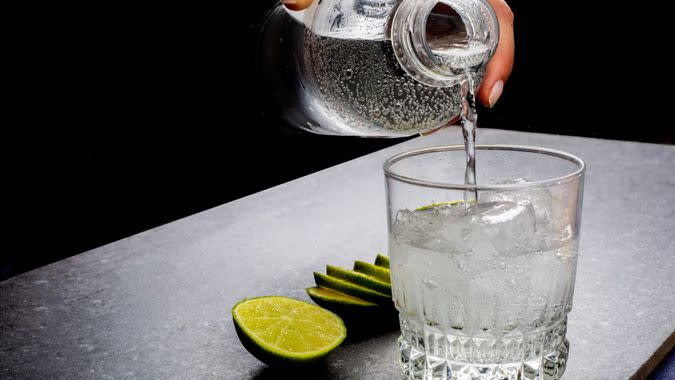
Soda Stream
We have all seen a Soda Stream or copycat in recent years. The Soda Stream system is the kitchen tabletop device that turns any water into a carbonated beverage with the click of a button. It was acquired by PepsiCo in 2015 for $3.2 billion , and is the company's attempt at targeting a growing consumer segment that is more health and environmentally conscious. Soda Stream also inevitably reduces the use of plastic bottles.
FYI: How Much Is Charity Work Really Worth?
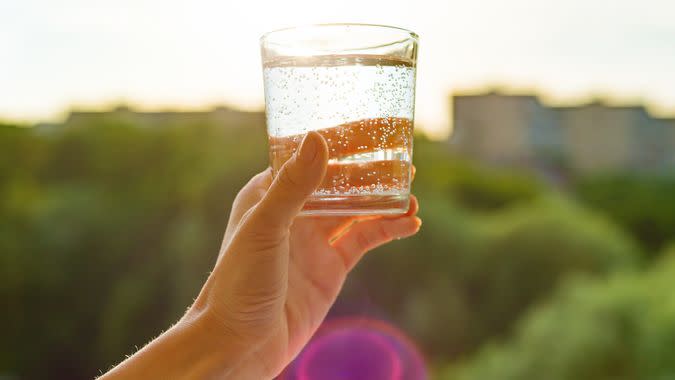
Sierra Mist
Sierra Mist is the Sprite of PepsiCo. The lemon-lime carbonated soda was introduce in 1999, and has been free of artificial sweeteners since 2010. The soda is instead sweetened with sugar and stevia.
Speaking of Sweet: The Chocolate Industry by the Numbers
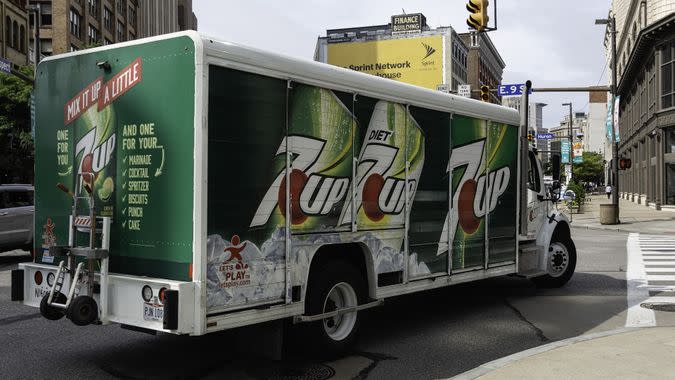
7 Up
Although Pepsi owns the international rights to 7 Up, it does not own the right to the company in the United States. The drink was invented in 1929, and although it changed hands a number of times (including with cigarette company Phillip Morris) the U.S./Canadian rights to the company are owned by Dr. Pepper/Snapple.
Heads Up: 11 Restaurants Where Kids Eat Free
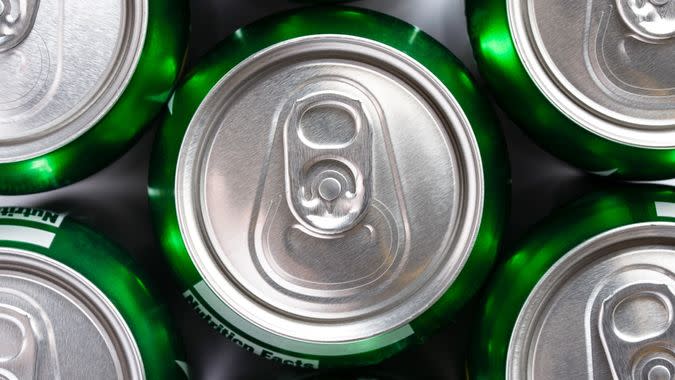
Mountain Dew
The green carbonated drink is the second most popular beverage brand behind Pepsi itself. Mountain Dew has brought in billions of dollars in sales and has the fourth highest market share in the United States soda market behind only Coca-Cola, Pepsi and Diet Coke. The drink was created in 1940 in Tennessee.
Net Worth: How Rich Is NASCAR Driver Chase Elliott?
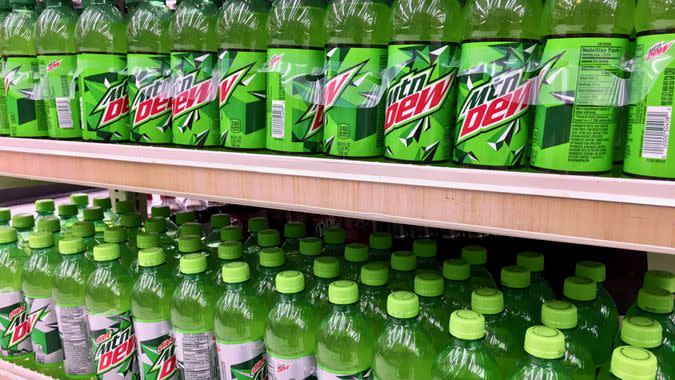
Diet Mountain Dew
Originally branded “Sugar-Free Mountain Dew”, the diet version of the original was released in 1986, and as of 2011, reached a billion dollars in annual sales.
Live Richer: 13 Splurge-Worthy Items That Will Help Keep You Healthy
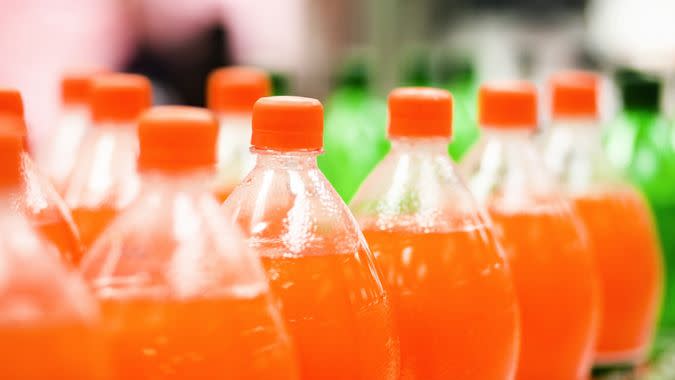
Mirinda
Mirinda was created in Spain in 1959, and acquired by PepsiCo in 1970. Never seen it? Think of a Fanta, which is the brand’s closest competitor. Miranda is popular in Europe and the Middle East.
Groceries: 8 Bulk Food Items You Need To Be Buying at Costco This Summer
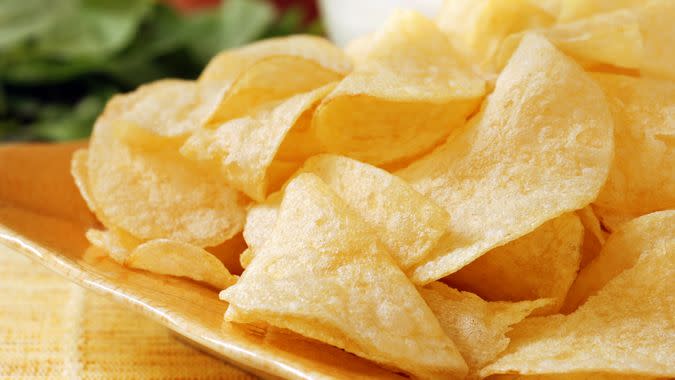
Walkers
Walkers is simply Lay’s, but with a different name for consumers in the UK and Ireland.
More From GOBankingRates
What Money Topics Do You Want Covered: Ask the Financially Savvy Female
Nominate Your Favorite Small Business To Be Featured on GOBankingRates
Monifi Review: Jumpstart Your Financial Progress With This Goal-Based Banking App’s $250 Bonus
Photo Disclaimer: Please note photos are for representational purposes only.
This article originally appeared on GOBankingRates.com: A Look at Every Company That Pepsi Owns

